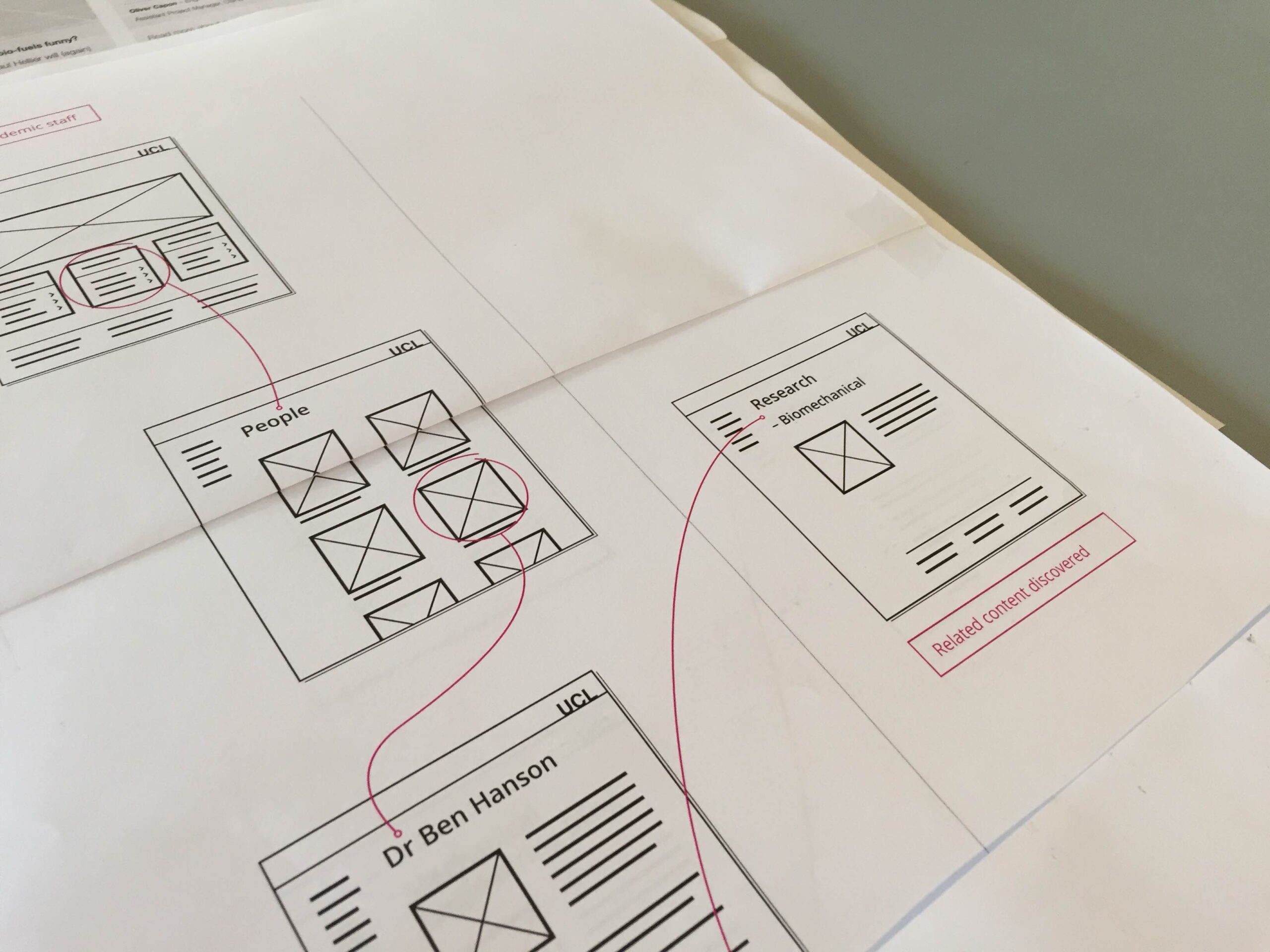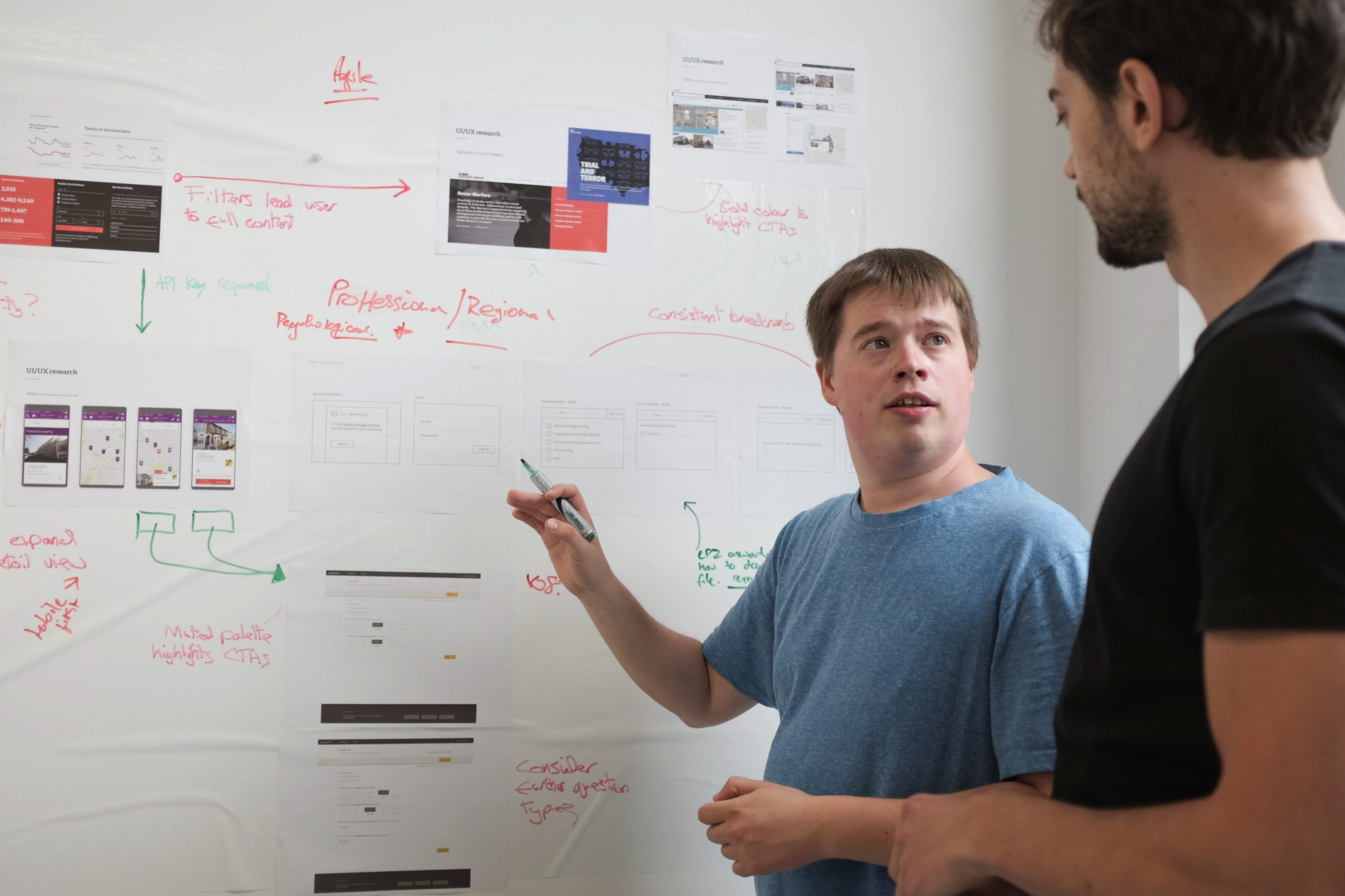9 questions to ask before starting a digital transformation project

Digital transformation projects are exciting to be involved in. They are usually high profile, deliver top drawer outcomes and reflect the strong ambitions and potential of the organisation instigating the process. We love seeing a successful digital project launch that gets great feedback and encouraging levels of adoption. Happy clients, happy customers and happy project team!
But digital transformation projects are about change. Inevitably, they involve hard work both during the project and after the launch. They also require careful preparation prior to the project start; the kind of research and scoping you do and the questions you ask can make all the difference to success.
In this article, we’re going to cover some of the questions you need to consider before starting a project that helps drive digital transformation. We’re not going to cover everything that is addressed within normal processes around project planning and making a business case, but we are going to cover some of the high-level questions that sometimes get missed.
1. Does your project align with wider digital transformation goals?
When you’re meticulously planning your project, it’s easier than you think to get caught up in the minutiae and miss the bigger picture. Any ‘digital transformation’ project must align with the wider goals of your organisation, any specific digitisation strategy or the key strategic objectives of your organisation as a whole.
Sometimes, that ‘bigger picture’ isn’t articulated because it seems obvious, or everyone’s been too busy working on the details. But defining and being explicit about a project’s wider value is key in aligning different stakeholders and project team members, framing expectations for your digital implementation partners, scoping out the details of your project, defining what success looks like and helping ensure everyone maintains focus. Every digital transformation project should be easily expressed as part of a wider digital strategy.

2. Have you carried out thorough user research?
A digital transformation project should never be based on assumptions. To be able to ascertain the details and scope out the requirements, you need to have a thorough understanding of your customers and your users; decisions must be based on data and evidence. Projects where stakeholders already have a strong view of what they want, so skip on user research, run the risk of not being successful.
At Browser, we always carry out a discovery phase to ensure users are at the heart of the project. Carrying out research via workshops, interviews, surveys, analytics and more, and using techniques and outputs like user journey mapping and personas, can all help. When you’re armed with data built up through research, it is much easier to scope your project, make a business case, measure success and even create advocates for your project output.
3. Are you just recreating the old process with new digital tools?
Many digital transformation projects are about improving processes and digitising workflows and interactions that might be offline, involve less than efficient tools (email and spreadsheets – we’re looking at you!) or even still involve paper. The pandemic has seen organisations move to digitise numerous processes that previously involved face-to-face interactions.
A typical pitfall of a digital transformation project is to take an old inefficient process and turn it into a new inefficient process. This happens when teams look at the old way of doing things and just reproduce it step-for-step using better digital tools. They may then be missing out on eliminating unnecessary steps, driving innovation, creating unexpected outcomes and improving customer service.
Digital transformation is about more fundamental change. Instead of reproducing what you already do in a slightly better way, rethink a process from the ground up, starting with the problem you’re trying to solve and the outcome you want to achieve. Techniques and approaches such as design thinking and journey mapping can help stimulate innovative thought and deliver true transformation.
4. Do you have access to the right skills and resources?
Assembling the right project team will be at the very centre of your planning efforts, and this will undoubtedly focus on your central project team. But it is important not to forget the wider team who can play a more peripheral but still critical role in your digital transformation project.
Always consider the skills and more niche resources you may need to draw upon, covering elements such as SEO, accessibility, taxonomy creation, translation and design or that tricky integration with another system. Early conversations with your digital implementation partner are a good idea here, but in-house resources can also be a rich seam of experience to draw upon. Also, don’t forget to set up a group to get involved in user testing!
5. Have you planned your change management and communications?
Digital transformation is as much about changing behaviours as it is about new tech. Usually, you’re asking customers, employees and the people who are going to be managing the app or site to adopt new behaviours and change the way they do things. It is absolutely essential to include change management and related communications in your project planning and give it the necessary time and resources. When budgets are tight, it’s usually the change aspects that are left under-resourced, but they’re a core part of digital transformation.
In planning change efforts, consider how you involve your users and stakeholders from the beginning. Carrying out user research and gathering ongoing feedback not only gives you critical data to fuel your project but is a change tactic in itself. Setting up networks of volunteer digital champions is another excellent option to drive usage, adoption and advocacy within an organisation.

6. Have you involved your risk and compliance teams?
Legal, regulatory and security concerns can delay, derail and even sink a digital transformation project. If you take away one thought from this post, it should be to involve your legal, risk and compliance teams in the project as early as possible. By working with the right stakeholders early on, you can identify the risks and deal with any potential showstoppers upfront, as well as get the ball rolling on elements such as Terms and Conditions, navigating GDPR concerns and ensuring the scope aligns with your organisation’s legal and regulatory commitments.
Interestingly, many regulated industries such as financial services will already have processes in place to make sure this happens. It’s within the less regulated industries that teams can forget to get the compliance team in early. On a related note, always communicate early with any trade unions or workers’ councils if your project impacts employees.
7. Are there any technical and data dependencies?
Digital transformation project showstoppers don’t only come from compliance areas, but also technical and data areas. Whilst these kinds of issues aren’t always possible to predict, many of them are.
Perhaps a particular system needs to be in place to enable an integration, or you need to have clean data? For example, let’s say a customer-facing portal relies on data from your CRM system, but the data it contains is in an extremely poor state – a dependency may be to clean up the records in your system and remove duplicates. Perhaps you’re launching a personalised platform for employees to improve efficiency, but your Active Directory profiles are full of holes – you may need to gather more complete AD data to create those personalised experiences for your users. Whatever your project, always make sure you identify the likely technical and data dependencies that could delay your project or limit its success.
8. Do you know what success looks like?
The goal of every digital transformation project is to be successful, but you can only achieve this if you know what success looks like. Knowing where you want to end up helps align requirements, and supports efforts to drive adoption and any improvements that need to be made after you launch. It will also help you line up the right KPIs and define your ‘north star metric’, ensuring you are tracking success and delivering on project goals. Here, carrying out user research can be important to provide baseline data so you can compare before and after.
9. Is there resourcing in place after launch?
The systems, sites and apps from digital transformation projects don’t look after themselves. They are likely to need further iteration and evolution, continuing change and communication, and named people to carry out day-to-day management. If you’re creating a new app, site or system, always consider the resourcing in place after launch and what “business-as-usual” looks like. There’s not much point in creating something great, only for it to fizzle out because there isn’t the right ownership and stewardship in place.
Always ask the right questions
Preparation and scoping are essential for a successful project, especially one that intends to deliver ‘digital transformation’ and all that it brings. Asking the right questions is always a good way to kickstart the right conversations and planning processes.